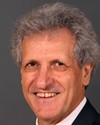Thank you.
Mr. Chair, members of the committee, on behalf of the Van Horne Institute and Peter Wallis, its president and executive director--he is unable to attend today's session, and has asked me to come on his behalf--I thank you for your invitation today.
The Van Horne Institute, for those of you who may not be familiar with it, is a not-for-profit organization affiliated with the University of Calgary, University of Alberta, Southern Alberta Institute of Technology, and Athabaska University. It was established to assist industry, government, and the public in addressing transportation issues, and includes 65 public, private, and non-profit members, including our fellow presenters VIA Rail.
I am an independent consultant, and head the firm of Shirocca Consulting. I have a background in planning and economics and 34 years of professional experience primarily focused on transportation. I've worked in both the public and private sectors, on projects ranging from feasibility studies to implementation of major capital infrastructure. I've been an associate of the Van Horne Institute since 2003, and was the project manager for the 2004 Calgary-Edmonton high-speed rail study.
Like the Quebec-Windsor corridor, high-speed rail has been studied and reviewed before in Alberta, first in 1984 and again in 1995. Both of those studies concluded that the costs were high and the ridership at the time insufficient to justify proceeding, but recommended future reviews.
The 2004 study was initiated at the request of the Alberta government in response to renewed interest about high-speed rail and recognition of the technological advances that had occurred in the interim period.
I would be remiss if I did not acknowledge and thank the federal government for its financial and technical participation in that study, through Transport Canada and the Office of Western Economic Development, along with the Province of Alberta. As well, the study received both financial and in-kind technical work and expertise contributed by several members of the Van Horne, including Bombardier Transportation, CANAC, Canadian Pacific Railway, SNC-Lavalin, and VIA Rail. However, I must also emphasize that all technical work provided through these members was reviewed by independent consultants and a steering committee to ensure no bias to the study's findings and consistency with the study's overall conservative approach.
The purpose of the 2004 study was to assess the feasibility of high-speed rail within the 300-kilometre corridor between Calgary and Edmonton; to identify, for governments and others, the economic and other implications of high-speed rail implementation; and recommend next steps. The study looked at two corridors: a new, or greenfield, corridor, which had been the sole focus of the previous studies; and shared use of the existing CPR corridor. However, both options assumed access into the city centres along the CPR corridor to avoid disruption and high cost, whereas the previous studies assumed terminating outside downtown for the same reasons.
Examination of the CPR option was possible because of the recent development of a non-electric technology by Bombardier at the request of the U.S. Federal Railroad Administration. The Jet Train, as it's called, is designed to meet North American engineering standards for mixed train operations, and is capable of operating at speeds up to 240 kilometres per hour.
The study also looked at electric high-speed rail capable of speeds up to 330 kilometres per hour, similar to those trains that operate in Europe on the greenfield option, allowing an apples-to-apples comparison of the two corridor options without technology bias.
These two train technologies were chosen because they were able to offer travel time of two hours or less, which market research showed as being the threshold to shift demand from other modes, particularly the car. By comparison, travel time today is, on average, three hours by car between Calgary and Edmonton and slightly more by air and bus.
The study assumed five stations, one in each downtown, two near each city's respective airports, and one in Red Deer, located at approximately the half-way point on the line. It also included provision for a new maintenance facility.
The service plan assumed five train sets, with four in service and one in maintenance rotation or held as a spare, to provide 11 train departures per weekday and five on weekends from Calgary and Edmonton respectively, plus an additional departure, or half-trips, from Red Deer on all days.
The price was set--based on market research to optimize revenue and ridership--at $115 return for business trips and $97 for non-business trips.
The total capital cost for the project was estimated to range from $1.7 billion for the CPR option to $3.4 billion for the electric greenfield option, slightly less for the non-electric. The main difference in these costs for the two greenfield options was electrification. The higher land acquisition and more extensive infrastructure requirements accounted for the difference between the CPR option and the greenfield corridor.
Annual operating costs were estimated to be $71 million for the CPR to $97 million for the greenfield, depending on the option chosen in year three, the first stable year of operations, and were then inflated by 2% per annum. Ridership was estimated to range from 1.7 million passengers annually for the CPR option and approximately 2 million for the greenfield, the difference reflecting the faster travel time of the greenfield option. This would constitute a 28% market share of all trips between the cities, with 75% of those trips diverted from cars, which are, and will remain, the dominant mode of choice for travel in the corridor. Revenue was based on passenger fares only and estimated to range from $83 million to $101 million per year, depending on the service option chosen.
Two financing structures were also examined: a totally government-funded option, and a P3, or a private-public partnership, whereby the private sector funded all rolling stock and equipment, such as ticket-vending machines and communications, and government funded infrastructure costs. This analysis revealed that operating revenues could cover all operating costs for all options and pay back all capital, plus almost $700 million, for the CPR option, and 73% of the greenfield electric costs over 30 years. These numbers do not include other benefits, such as employment and income, travel time savings, safety benefits, greenhouse gas reduction, and economic development, nor, in the case of the CPR corridor option, the benefits to freight and industry that would result from rail upgrades.
The study concluded that high-speed rail could generate significant benefits to the province and that there was sufficient demand at that time, in 2004, to support high-speed rail that offered two hours or less in travel time in the corridor. It also confirmed the technical and financial feasibility of both corridor options, the greenfield and the existing CPR, and both train technology options. I noted the advantages offered by the CPR option of lower capital and operating costs, less property disruption, complexity, and time required for implementation, and benefits to the freight industry, but the need to balance this against higher ridership, benefits of an exclusive corridor, and more extensive negotiations was also noted.
The study's recommendations included out carrying out an investment grade ridership analysis to provide greater certainty to this, which is typically the area of largest risk and uncertainty on projects of this kind. I can report to you that the Alberta government accepted this recommendation and has since carried out the analysis, but the report has yet to be released, to my knowledge.
In closing, and on a personal note, while as a consultant I welcome more studies, and as a taxpayer I value and appreciate the need for due diligence, I have also observed in my 34 years of professional practice that at the end of the day, projects require a leap of faith, courage, conviction in the value they can deliver and the benefits they anticipate, and the determination to achieve this.
There is no question that high-speed rail will require government involvement if it is to proceed. There is equally no question that government must participate fully in that implementation. It has the authority and power necessary to acquire right-of-way and a vested interest in how this right-of-way and service can shape our future, but I also have no doubt that the private sector is willing and able to share risk and participate in these ventures if they are properly structured.
I'm happy to leave the deliberation on leaps of faith with the committee and wish you good luck.
I apologize for not having enough confidence to speak French just a little. In any event, I am very happy to be here.
Thank you.




